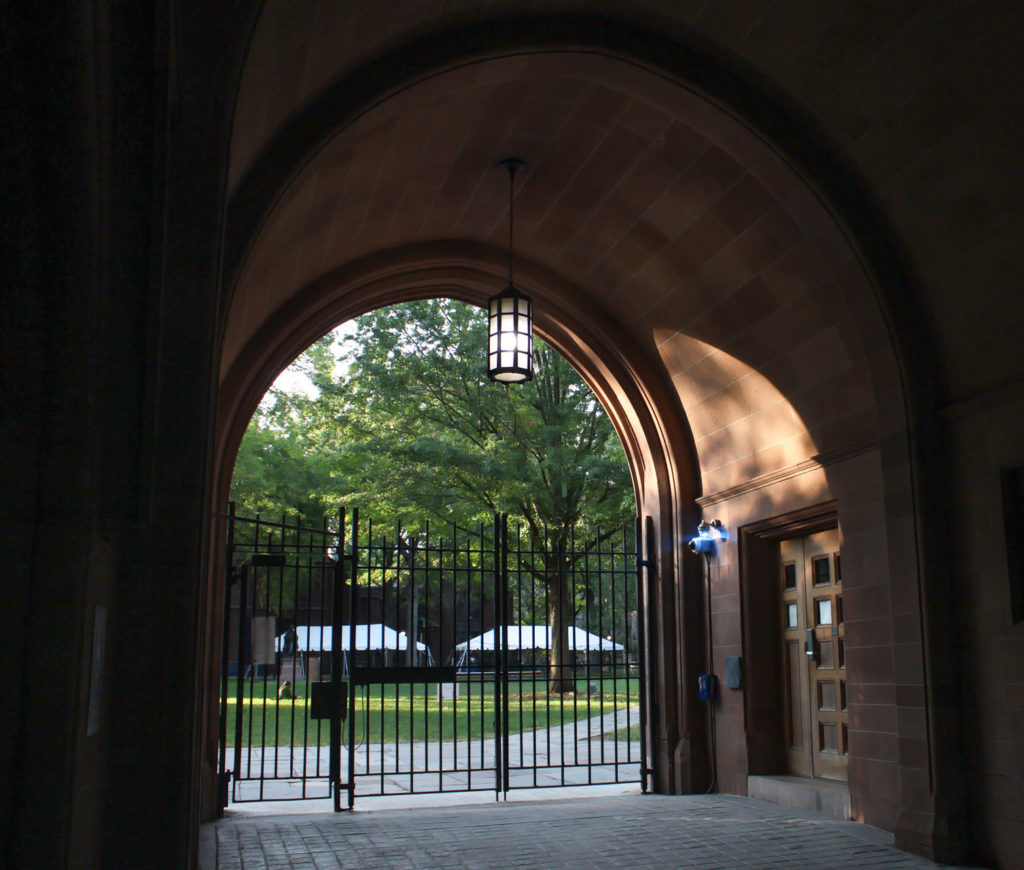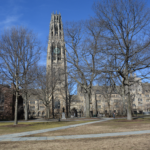
Yasmine Halmane
The University has increased tuition by about 4 percent for the 2021-22 academic year, as it comes off of a year of largely online instruction.
The Yale College term bill will come to $77,750 for students living on campus, split into $59,950 for tuition and $17,800 for room and board. University Provost Scott Strobel said that the tuition increase reflects the rising cost of providing a Yale education and the inflation of non-salary expenses. More than half of undergraduates are not impacted by the tuition increase, as Yale meets all demonstrated financial need, Strobel said.
But the tuition raise comes at a time when many of Yale’s students have been hard-hit by economic losses during the pandemic, while the University, through careful management of its assets, has improved its financial situation. Yve Golan, a lawyer representing one student bringing a class-action suit against the University regarding last spring’s tuition costs, said it’s “grossly inequitable” for Yale to be raising tuition at this time.
“This academic year has definitely not been worth the whole amount and I’m still bitter — furious actually — that they raised [tuition] when basically everything is online,” Eui Young Kim ’21 told the News. “Maybe they can raise it a little bit to match inflation for the next academic year, but even then I’m not sure this fall is going to be completely back to normal. I don’t see why the tuition increases every year when I don’t feel like the quality of my education has increased proportionally.”
Strobel noted that the pandemic affected Yale’s finances. He estimated that the pandemic has cost Yale about $325 million in lost revenue and COVID-19-related expenses. The number continues to rise as costs pile up, he added.
Last year, in the midst of the pandemic, Yale raised its tuition by 3.96 percent to $57,700 for the 2020-21 academic year, which, when combined with $17,200 for room and board, amounted to $74,900 for students living in-residence for the full year. Harvard University also hiked tuition up four percent to $49,653. By contrast, universities including Princeton University and Georgetown University offered decreased tuition for online classes, cutting costs by 10 percent. Williams College gave students a 15 percent discount.
The $325 million in pandemic costs are a combination of lost revenue and extra costs, Strobel said. Those extra costs include personal protective equipment, COVID-19 testing and upgraded cleaning protocols. Additionally, the University has continued to pay staff who must work from home, has bought out vacation days for people who could not use their accrued time off and has extended the time period during which staff can use vacation days.
The University made the decision to handle the additional costs centrally, meaning Yale does not charge students or Yale’s 12 graduate or professional schools or units — which include the Peabody Museum and Yale Athletics — to cover those costs, Strobel said. Instead, the money comes out of revenue the endowment generates. Initially, administrators thought they might have to borrow money and pay it back over multiple years. Now, they think they can cover pandemic-related costs in this year’s budget, Strobel said. This is due to endowment revenue and cost-saving measures from the hiring and salary freezes, as well as asking each unit to find places to cut costs internally, according to Strobel.
In a normal year, the funds from the endowment used to pay for pandemic costs would have been used for travel or hosting events, Strobel said.
In contrast with other schools, Yale’s administrators did not take pay cuts, as the presidents of Harvard, Cornell University, Dartmouth College and Brown University did. Yale’s administrators did freeze their salaries and did not take raises during the pandemic, but Strobel did not directly address a question as to why University administrators did not take pay cuts.
Despite the added costs of the pandemic, Yale’s endowment has likely increased in size during the past year, according to FAS Senate meeting minutes from the fall. The endowment was most recently valued at $31.2 billion.
“I can understand Yale’s desire for growth and its desire for continued profitability,” Golan said. “But it is not looking at the reality of its students. None of the students got the education that they chose, that they paid for, and for Yale to try to insist on receiving pre-pandemic revenues and pre-pandemic growth despite that inequity, I think it’s grossly unfair.”
According to John Dysart, president of the enrollment management consulting firm The Dysart Group, Yale differs from many other universities because of its large endowment, which is the second-biggest in the world. Yale’s endowment revenue constitutes the largest share of its annual operating budget, followed by medical services income and grants and contract income. About 10 percent of Yale’s budget is funded by tuition, according to the 2019 budget report.
Dysart said it is unlikely that a three percent tuition increase will allow Yale to offer significantly more financial aid — but it will, some students say, make a Yale education more burdensome during a year fraught with economic challenge.
“It’s cruel to have students and their families shoulder an additional financial burden in a time when millions of people are un- or under-employed due to a still-ongoing public health emergency affecting everyone, but especially the families of many working-class Yale students, who will further struggle with already considerable academic expenses and student income contributions,” Sebastian Baez ’23 told the News.
For its part, Yale has committed to meeting students’ demonstrated financial need, which has increased during the pandemic, Strobel said. It has maintained the new financial aid initiatives it announced in 2019, including raising the annual income threshold for families who qualify for a zero parent share award to $75,000 from $65,000. Yale also reduced the expected student share for these awards by more than $4,000 over their four years.
Vice Provost for Academic Initiatives Pericles Lewis explained that even paying full tuition does not cover most of the cost of a Yale education. Lewis added the majority of students get some kind of financial aid. But recognizing that it is still a challenge for even upper-middle-income families to pay the bill, Yale tries to keep the tuition “under control,” Lewis said. But because costs in higher education go up, the tuition increases in parallel, Lewis said.
Many higher education institutions raise tuition to keep up with escalating costs, Dysart added. Schools are usually careful about raising tuition, and raise it only because they truly need the extra revenue, he added.
But particularly during the pandemic, when people are under economic strain, many schools froze tuition or had extremely small increases, Dysart said. Many academic institutions, including American University and the University of North Carolina, have frozen tuition this year.
“There’s a lot of institutions with significantly fewer resources that have been biting the bullet and either going with extremely small increases or actually freezing tuition,” Dysart said. “Just in recognition that this is hard on [their] students.”
One student has taken action aiming to ensure Yale keeps tuition costs down.
Jon Michel ’22 sued the University last summer, claiming Yale breached its contract and was unjustly enriched by switching to online classes without reimbursing students.
Golan, Michel’s lawyer, summarized the rationale behind Michel’s case. When the News previously contacted Michel about his suit, his lawyers explained that they would speak on his behalf about the case.
“If I buy tickets to see Hamilton live and I’m instead given a code to watch Hamilton on Disney+, it’s not the same,” Golan said. “Maybe it’s a very good production, but it’s not what I paid for. It’s not what I chose to purchase.”
Golan said it is understandable that Yale moved to remote instruction because of the pandemic last spring, but it means students are entitled to a discount. Golan said studies show students prefer in-person instruction to online learning, and that students are less engaged when taking online courses.
The case is currently at the pleading stage. Yale filed a motion to dismiss the case, Michel’s lawyers have filed an opposition to that motion and the case is now pending before the U.S. District Court in Connecticut, Golan said.
But Dysart said he does not think the spate of class-action lawsuits like Michel’s will ultimately be successful. Though he understands students’ disappointment at having to finish out the spring at home, he does not see a legal claim for a refund.
Yale College’s term bill first surpassed $50,000 in the 2011-12 school year and has steadily increased since.
Rose Horowitch | rose.horowitch@yale.edu










